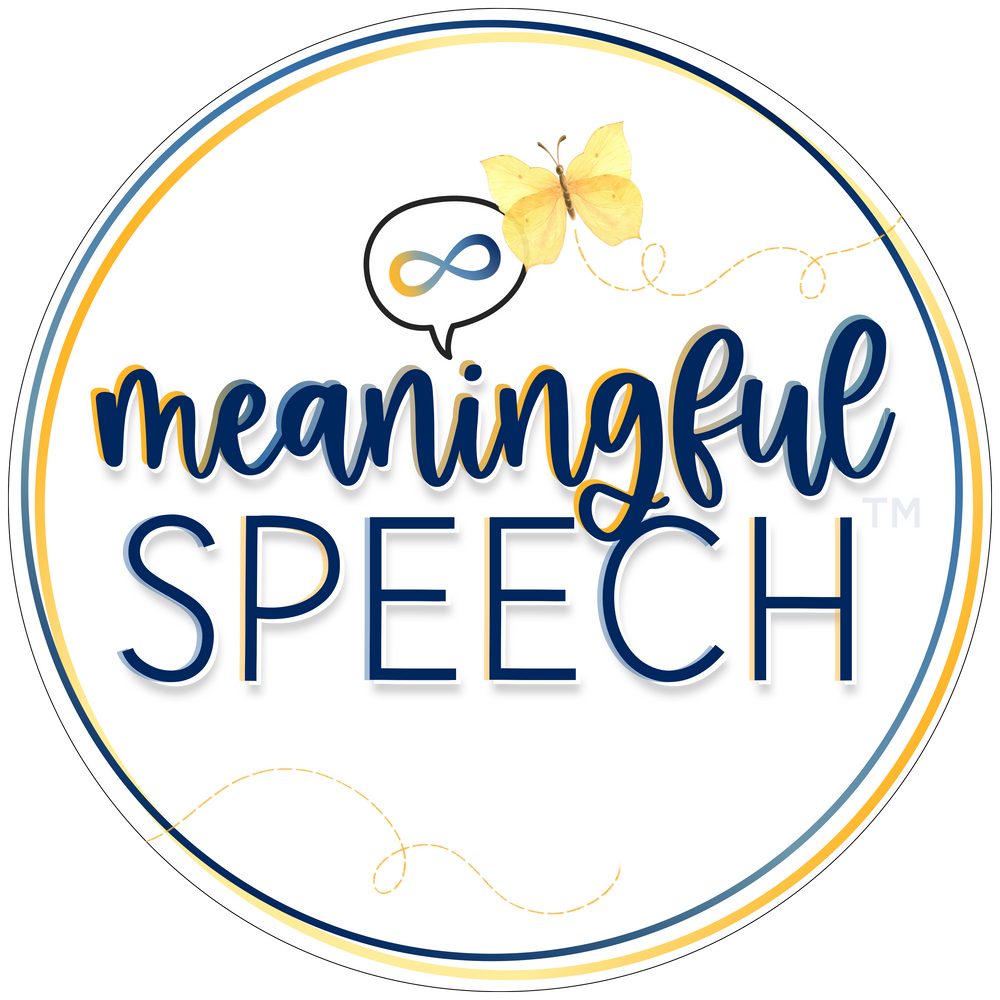Sensory & Gestalt Language Processing
Dec 06, 2023
One of our mottos at Meaningful Speech is “when we move, language moves.” Understanding a child’s sensory profile and supporting their sensory system is foundational to supporting language development. When a child is dysregulated, they often cannot access self-generated language and in some cases cannot access language at all. When children are dysregulated they will have difficulty engaging with their environment and picking up on our language models. We are all responsible for supporting a child's sensory systems. Sensory regulation is something that we need to constantly assess, it is a continuous process.
Movement “breaks” and sensory rewards
Many therapists use a child’s sensory needs as rewards in therapy. For example, if the child completes an adult-directed task they are rewarded with jumping on the trampoline. The child has to earn access to things that they need to be regulated. Some therapists also use “movement breaks” during therapy to “get children back on task”. This is reactive rather than proactive. We need to be supporting a child’s sensory system proactively. Movement should be allowed and incorporated into therapy sessions. Therapists should follow the child’s lead. Often a child will gravitate towards what their body needs. If you are unsure of how to learn about or support a child’s sensory profile, it’s important to consult with an occupational therapist knowledgeable in sensory processing if possible.
Ideas for supporting gestalt language processors
When supporting gestalt language processors we use child-led therapy. We can have items and equipment out (if possible) so that they’re accessible if the child wants to engage with them. We want to emphasize that although some of these ideas include various tools and equipment, you don’t need anything fancy. Many of these ideas can be modified with everyday objects.
- Swinging (if you don’t have access to a swing, swing or drag in a blanket)
- Crawling through a tunnel (if you don’t have access to a tunnel, make a “fort” a child can crawl through with household or therapy room furniture)
- Obstacle courses (these are great for group therapy!)
- Jump and crash (if you have a crash pad, great! If not, you can use blankets or cushions)
- Heavy work to provide calming input (You can do this with everyday objects such as grocery bags, filled backpacks, books, sensory equipment, having the child clean up/put away larger toys, etc. and have the child carry/push/pull these items.)
- Tactile manipulatives like spiky balls, putty, stress balls, hair scrunchies, pipe cleaners, etc.
- Dimming or reducing the lights in the room for children who have light sensitivities and are overstimulated by too much artificial or fluorescent lighting. If possible, let in natural light and reduce artificial lighting.
This is not a comprehensive list. These are just some ideas to get you started and thinking about ways you can incorporate support into your home or sessions. If you’re feeling like you need more support when it comes to sensory regulation, we have a bonus module in our original course by occupational therapist, Dr. Diamond Rashad OTD (@adimeofot on Instagram). She discusses key terms, sensory thresholds, patterns of sensory processing, internal and external behaviors, shares case studies and gets into practical strategies and tips. We also have lunch and learn discussions with Christine Jurjovec, OT of The Balanced Kid (@thebalancedkid_ot) and Jessie Ginsburg, the Sensory SLP (@sensory.slp) available in our course as well.
Want to learn more in-depth information about how to support gestalt language processors?
1. There are many free podcasts, webinars and articles to get you started. A comprehensive list of resources can also be found on our website.
2. Consider taking the Meaningful Speech course to learn more about how your child or client processes language, how you can help support them from echolalia to self-generated (original flexible) language, child-led therapy, and neurodiversity-affirming practices. Looking for something shorter? We have a 1-hour introductory course perfect for extended family, daycare or school staff.
3. Consider taking our AAC + Gestalt Language Processing course. It will teach you how to identify, evaluate and support gestalt language processors who use AAC or who you think might benefit from AAC.
4. Look for a speech-language pathologist (SLP) who "gets it" and can help you in supporting your child's language development. Check out our registry for SLPs who understand gestalt language processing and child-led therapy.
5. Are you a school-based or private practice clinician looking for intake forms for new clients/students or creative visual reminder posters for your space? Check out the Meaningful Speech Marketplace.
